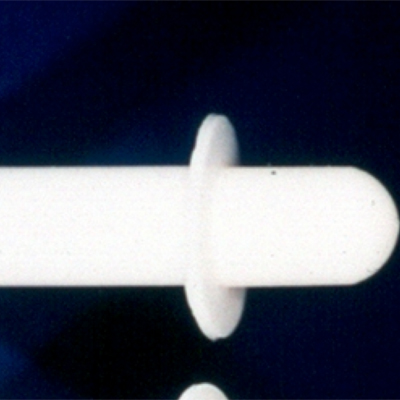Blom Singer® Duck Bill
Clinical application
The Blom Singer® Duckbill prosthesis is one of the oldest voice prostheses. It was developed from a piece of bladder catheter with the tip snipped, which resulted in the duckbill-shaped valve. The length of the bill determines the opening resistance of the valve. The valve is basically stable against underpressure. It fits deep in the esophageal lumen, and is occasionally blocked by mucus membrane from the esophagus in an open or closed position. The Blom Singer® Duckbill prosthesis is ideal for inexpensive, reliable voice rehabilitation, including in developing countries.
| Type of prosthesis: | Non-indwelling prosthesis |
|---|---|
| Outer diameter of shaft: | 16 Fr (5.9 mm) |
| Shaft lengths: | 4-22 mm in 2 mm increments |
| Material: | medical-grade silicone |
| Valve type: | bill valve |
| Method of insertion: | gel capsule, anterograde |
| Indication: | low-pressure valve flap opening |
| Biofilm resistance: | no |
| Underpressure stability: | yes |
| Non-fatiguing valve mechanism: | no |
| Prevalence: | USA, Europe (rare), Asia (rare) |
Literature
1. Blom ED, Singer MI., Tracheoesophageal puncture prostheses., Arch Otolaryngol. 1985 Mar;111(3):208-9.
2. Medina JE, Nance A, Burns L, Overton R., Voice restoration after total laryngopharyngectomy and cervical esophagectomy using the duckbill prosthesis., Am J Surg. 1987 Oct;154(4):407-10.
3. Weinberg B, Moon J., Aerodynamic properties of four tracheoesophageal puncture prostheses.
Arch Otolaryngol. 1984 Oct;110(10):673-5.
4. Stuart DR, Kotsanis CA, Borkenhagen R., Comparison of two voice prostheses for vocal restoration following laryngectomy., Otolaryngol Head Neck Surg. 1983 Dec;91(6):632-7.

